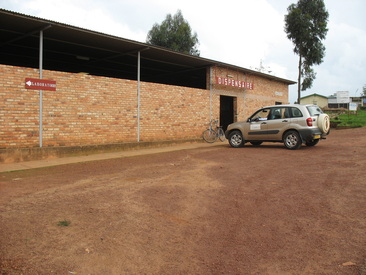
In the following blog, Alex Hakuzimana presents a summary of results of a study on mapping of health financing schemes in Rwanda. He provides a comprehensive description of existing schemes in Rwanda, analyses their different combinations and draws a comparison between twelve other Francophone African countries involved in a multi-country collaborative research on the fragmentation of health financing schemes as described in a previous blog.
Rwanda is hailed for being one of low income countries able to reach health MGDs 4, 5, and 6. The country is also hailed for being on the right track towards progressive realization of universal health coverage. A combination of many factors can help explain this. These include various sector reforms within and outside the health sector in a context of strong national ownership, cross sector collaboration, decentralization and the sector-wide approach. In health sector, a lot of literature is available on the role played by two health financing innovations including performance-based financing and community-based health insurance in Rwanda. However this focuses only on their outcomes. It does not tell anything about the whole architecture, about the health financing schemes, their size, benefits and coverage. As the country is moving towards universal health coverage, it is very important to map existing health financing schemes with a view to contributing to the evidence base for programming and planning purposes. For this exercise we have applied the methodological framework of the “Muskoka study”.
Mapping of health financing schemes in Rwanda
By using this methodology, I had a two-fold objective (i) contribute to Rwanda’s universal health coverage path by providing a comprehensive overview on the existing health financing schemes in order to inform policy makers on possible reforms and (ii) compare with the situations in 12 Francophone African countries and identify differences and commonalities that may help appreciate how Rwanda is progressing toward universal health coverage.
This study was a document review by collecting data with guidance and adaptation of the research instruments developed for the multi-country collaborative research project. For each scheme, data was collected on following features: target population, benefit package, financing, payment methods, institutional design and organizational practices. It is worth noting that out-of-pocket payment as a scheme was excluded. The description, analysis, and comparison were made on the basis of findings by focusing on the synergies and/or overlaps between the schemes.
So what are our main findings?
There are commonalities and differences between Rwanda and Francophone African countries on the architecture of their respective health care financing systems. For instance, the fragmentation of their health financing systems is ubiquitous but with lesser extent in Rwanda. While these countries have on average 23 schemes ranging from 15 to 32, Rwanda has only 11. This may be due to the highly external dependence of health sector funding in all these countries. However, the Rwanda government’s emphasis on cross-sector collaboration, decentralization, sector-wide approach framework and strict alignment of donor projects to national priorities has promoted accountability for both government and donors, which might explain the lower number of schemes in Rwanda contrary to other countries. Unsurprisingly for low income countries, the better-off benefit more of the system than the worse-off by using both exemption schemes and insurance benefit. In targeting programs, women and under five children are the main target groups of the schemes contrary to Rwanda where health insurance is compulsory to all residents. Pro-poor programs are operational countrywide in Rwanda while not in those countries. There is an appalling difference on out-of-pocket expenditure that was 11% in 2009/10 in Rwanda while the lowest was 65% in 2011 in Burundi. Benefit package is also partially found in all countries including Rwanda but not to the same extent. There is also a mixed use of provider payment mechanisms in all these countries proportional to the number of schemes.
Box: Health Financing schemes in Rwanda
Our study has revealed that the Rwanda health system, like in other 12 Francophone African countries, is fragmented because of a mix of health financing schemes. Rwanda's health sector, like that of other low income countries, is also highly dependent on external funding, with a large share of the Global Diseases Initiatives such as The Global Fund and PEPFAR. This study shows the importance of not only financing a health system to function but also of managing it. Given the relevance of health financing for universal coverage, it is important to launch wide consultations and dialogue with stakeholders in order to discuss on how the health system should be financed while looking for overall efficiency and quality.
This study was carried out as a dissertation in partial fulfilment of requirements for the degree of Master of Science in Public Health at the Institute of Tropical Medicine (ITM) of Antwerp during the 2013/2014 academic year. You can access it by clicking here.







